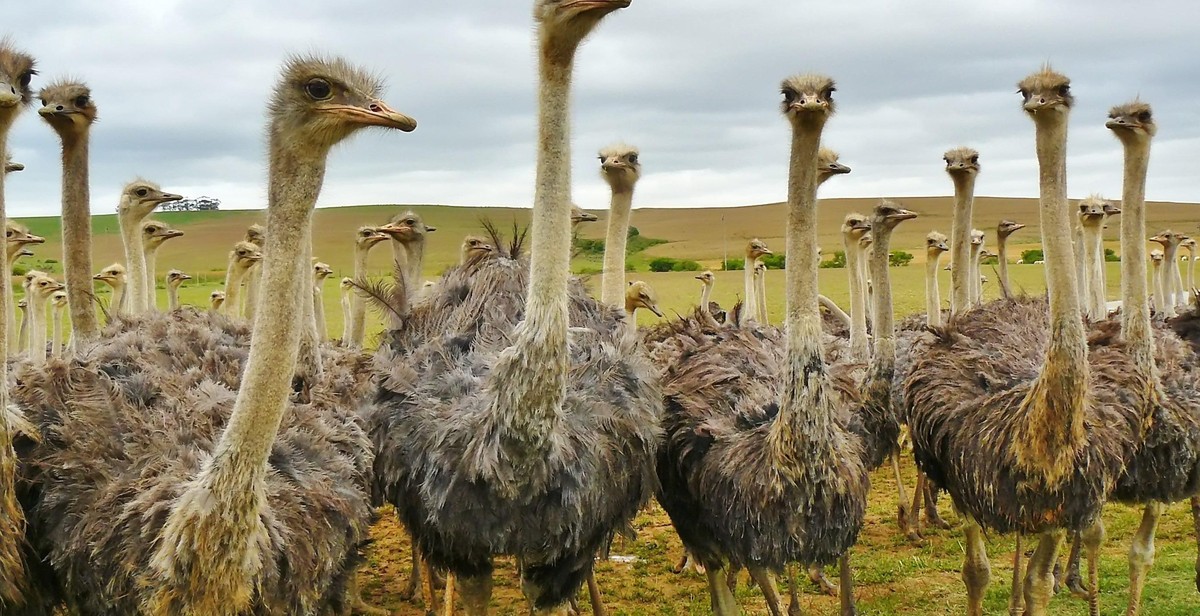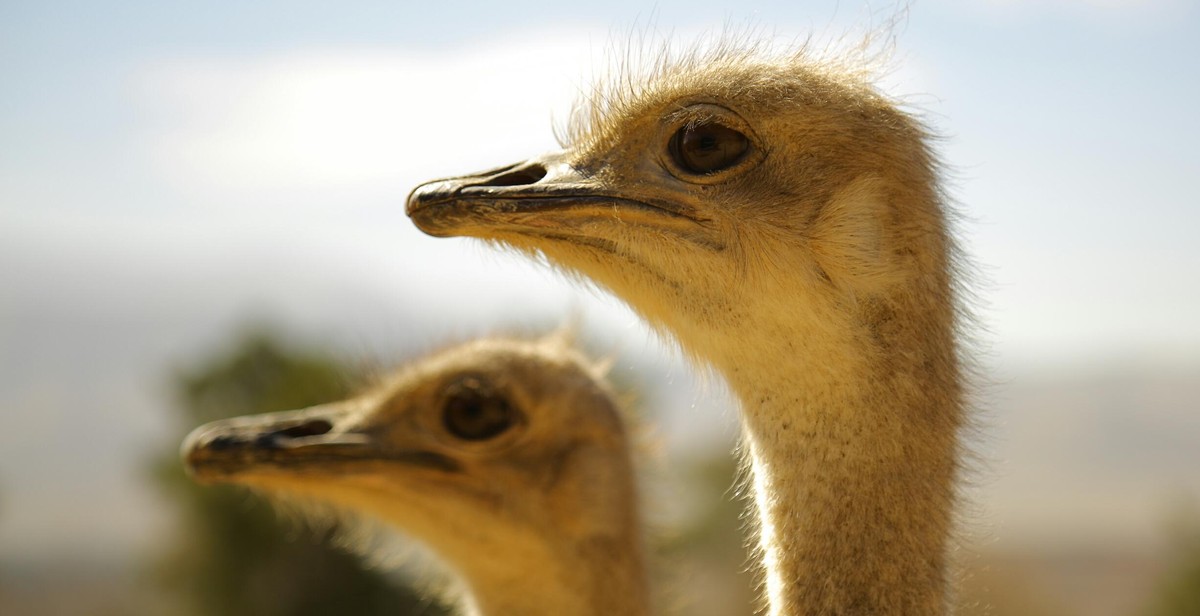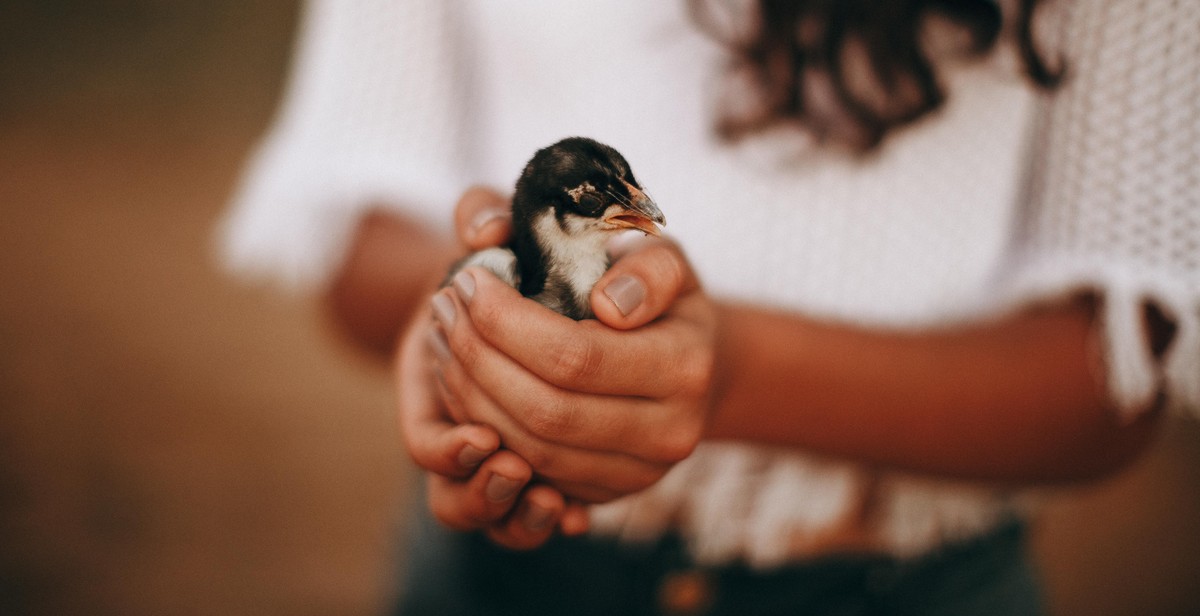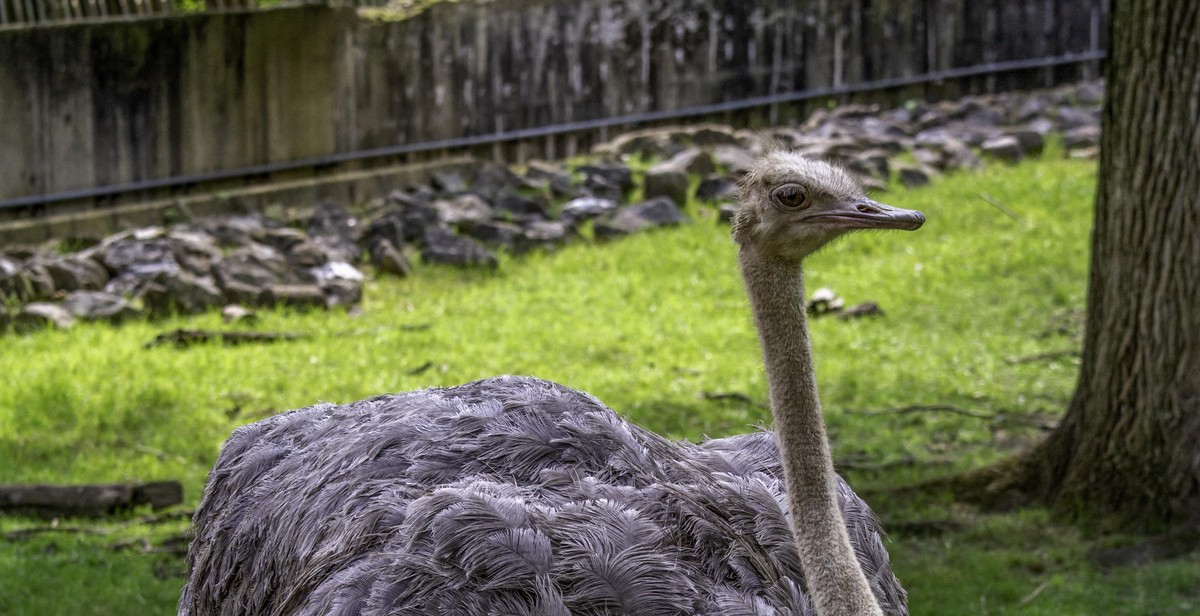How to Breed Ostriches: Reproduction and Breeding Strategies for Ostrich Farming
Ostrich farming has become a lucrative industry in recent years due to the high demand for ostrich meat, eggs, and feathers. However, breeding ostriches can be a challenging task as they require specific conditions and care to reproduce successfully. In this article, I will share my personal experience and expertise in ostrich breeding, as well as the strategies and techniques used by successful ostrich farmers.
Understanding Ostrich Reproduction
Ostriches are polygamous birds, meaning that one male can mate with multiple females. They reach sexual maturity at around 2-3 years of age and can live up to 50-75 years. Female ostriches lay eggs in communal nests, and the male is responsible for incubating them. Ostrich eggs are the largest of any bird species and can weigh up to 3 pounds.
Key Strategies for Successful Ostrich Breeding
- Providing a suitable breeding environment, including adequate space, nesting areas, and temperature control.
- Ensuring proper nutrition and hydration for the ostriches, including a balanced diet and access to clean water.
- Implementing a breeding rotation system to prevent inbreeding and maintain genetic diversity.
- Regular health check-ups and vaccinations to prevent the spread of diseases among the ostriches.
By following these strategies and techniques, ostrich farmers can increase their chances of successful ostrich breeding and contribute to the growth of the ostrich farming industry.

Understanding Ostrich Reproduction
Ostriches are the largest birds in the world and are known for their unique reproductive system. Understanding their reproductive system and cycle is crucial for successful ostrich farming and breeding.
The Ostrich Reproductive System
The ostrich reproductive system is different from most birds. Ostriches have a single reproductive opening called a cloaca, which is used for both mating and egg-laying. The male ostrich has a penis-like structure called a phallus, which is used to deposit sperm into the female’s cloaca during mating.
Female ostriches have two ovaries, but only the left one is functional. The ovary produces a yolk, which is released into the oviduct. The yolk then moves through the oviduct, where it is fertilized by the sperm and forms an egg. The egg is then laid through the cloaca.
Ostrich Reproductive Cycle
The ostrich reproductive cycle is influenced by the seasons. Breeding season usually starts in March and ends in September, with the peak season being from May to August. During the breeding season, male ostriches will become more aggressive and will start to court the females.
Once the female ostrich has mated, she will lay an egg every two days until she has laid a clutch of 20-30 eggs. The eggs take approximately 42 days to hatch, and the chicks will stay with their parents for up to a year.
It is important to note that ostriches have a high mortality rate during the egg incubation period. Proper care and management of the eggs and chicks are crucial for successful ostrich breeding.
In conclusion
Understanding the ostrich reproductive system and cycle is essential for successful ostrich farming and breeding. Proper care and management of the eggs and chicks are crucial for a high survival rate. By following proper breeding strategies, ostrich farmers can ensure a healthy and productive flock.

Selecting Breeding Stock
The success of ostrich breeding depends on the quality of the breeding stock. When selecting breeding ostriches, age, health, genetics, and bloodlines are important factors to consider.
Age and Health
It is best to select ostriches that are at least two years old for breeding. Younger ostriches may not have reached sexual maturity, and older ostriches may have a lower fertility rate. It is important to conduct a thorough health check on potential breeding ostriches before selecting them. Look for signs of illness or injury, and check their weight and body condition. Ostriches that are in good health and physical condition are more likely to produce healthy offspring.
Genetics and Bloodlines
Genetics and bloodlines play a crucial role in ostrich breeding. It is important to select ostriches with desirable traits that are consistent with the goals of the breeding program. Consider the traits that are important for your breeding program, such as size, meat quality, and feather color. Look for ostriches with a strong genetic background and bloodlines that have a history of producing healthy and successful offspring.
| Factors to Consider When Selecting Breeding Stock |
|---|
| Age |
| Health |
| Genetics |
| Bloodlines |
By selecting high-quality breeding stock, ostrich farmers can increase the likelihood of producing healthy and successful offspring.

Breeding Strategies for Ostrich Farming
Ostrich farming is a lucrative venture that requires proper breeding strategies to ensure the success of the business. There are three main breeding strategies for ostrich farming:
Natural Breeding
Natural breeding is the most common method used in ostrich farming. It involves keeping a male ostrich with several females to mate naturally. The male ostrich is usually kept in a separate pen from the females and rotated periodically to ensure that all females have equal opportunities to mate with him.
During the breeding season, which runs from April to September, the males will start displaying courtship behavior such as puffing up their feathers, making grunting sounds, and swaying their necks to attract the females. The females will respond by either accepting or rejecting the male’s advances.
Artificial Insemination
Artificial insemination is another breeding strategy used in ostrich farming. It involves collecting semen from a male ostrich and depositing it into the female’s reproductive tract using a specialized instrument.
This method is useful when a farmer wants to breed a female ostrich with a specific male ostrich without having to keep them together. It is also useful when a male ostrich is injured or unable to mate naturally.
Embryo Transfer
Embryo transfer is a relatively new breeding strategy used in ostrich farming. It involves collecting fertilized eggs from a female ostrich and transferring them into another female ostrich’s reproductive tract.
This method is useful when a female ostrich is unable to lay eggs or when a farmer wants to breed a female ostrich with a specific male ostrich without having to keep them together.
| Breeding Strategy | Advantages | Disadvantages |
|---|---|---|
| Natural Breeding | Low cost | Unpredictable mating behavior |
| Artificial Insemination | Controlled breeding | Requires specialized equipment and training |
| Embryo Transfer | Controlled breeding | Requires specialized equipment and training |
Each breeding strategy has its advantages and disadvantages, and a farmer should choose the method that best suits their needs and resources.

Incubation and Hatching
Incubation is a crucial step in ostrich breeding and requires careful attention to temperature and humidity. The ideal temperature for ostrich eggs during incubation is between 97 and 99 degrees Fahrenheit. If the temperature is too high, the embryo may develop too quickly and result in a weak chick. If the temperature is too low, the embryo may develop too slowly or not at all.
Humidity is equally important during incubation. The ideal humidity level for ostrich eggs is between 40 and 50 percent. If the humidity is too high, the egg may become too moist and lead to bacterial growth or the drowning of the embryo. If the humidity is too low, the egg may dry out and result in a weak chick or no hatching at all.
Hatching Time and Conditions
Ostrich eggs typically hatch after 42 to 46 days of incubation. During the final days of incubation, the eggs should be placed in a separate hatching area with higher humidity levels of around 60 percent. This will help the chicks to break through the eggshell more easily.
Once the chicks have hatched, they should be kept in a warm and dry environment with temperatures between 80 and 90 degrees Fahrenheit. The chicks should be provided with food and water immediately after hatching, and the water should contain electrolytes to help the chicks recover from the stress of hatching.
| Requirement | Ideal Range |
|---|---|
| Incubation Temperature | 97-99°F |
| Humidity | 40-50% |
| Hatching Time | 42-46 days |
| Hatching Humidity | 60% |
| Hatching Temperature | 80-90°F |

Rearing and Caring for Ostrich Chicks
Successfully rearing ostrich chicks requires a lot of attention to their feeding and nutrition, housing and environment, and health and disease management. Here are some tips to help you get started:
Feeding and Nutrition
Ostrich chicks have a very high growth rate and require a diet that is high in protein and energy. A starter feed with a protein content of at least 20% is recommended for the first 8 weeks of life. After that, a grower feed with a protein content of 16-18% can be fed until the chicks are 6 months old. It is important to provide fresh, clean water at all times.
In addition to commercial feeds, ostrich chicks can also be fed fresh greens, fruits, and vegetables. However, it is important to avoid feeding them anything that is high in oxalic acid, such as spinach or rhubarb, as this can interfere with calcium absorption.
Housing and Environment
Ostrich chicks need a warm, dry, and draft-free environment. A brooder house or box with a heat source, such as a heat lamp, is necessary for the first few weeks of life. The temperature should be kept at around 95°F for the first week and then gradually decreased by 5°F each week until the chicks are fully feathered.
After they are fully feathered, ostrich chicks can be moved to a larger pen or pasture with access to shade and shelter from the elements. The pen should be free of sharp objects and hazards that could injure the chicks.
Health and Disease Management
Ostrich chicks are susceptible to a variety of diseases, including coccidiosis, avian influenza, and Newcastle disease. It is important to work with a veterinarian to develop a vaccination and health management plan for your chicks.
Regular cleaning and disinfection of the housing and equipment is also important for preventing the spread of disease. Any sick or weak chicks should be separated from the rest of the group and given appropriate treatment.
| Feeding and Nutrition | Housing and Environment | Health and Disease Management |
|---|---|---|
| Provide starter feed with at least 20% protein for the first 8 weeks, then switch to grower feed with 16-18% protein until chicks are 6 months old. Additionally, fresh greens, fruits, and vegetables can be fed, but avoid anything high in oxalic acid. | Provide a warm, dry, and draft-free environment with a heat source for the first few weeks of life. Move to a larger pen or pasture with access to shade and shelter from the elements once fully feathered. Keep pen free of hazards. | Work with a veterinarian to develop a vaccination and health management plan. Regularly clean and disinfect housing and equipment to prevent the spread of disease. Separate sick or weak chicks and provide appropriate treatment. |

Conclusion
Overall, ostrich farming can be a profitable venture if done correctly. To ensure successful breeding and reproduction, it is important to follow the right strategies and techniques. This includes proper nutrition, adequate space, and careful selection of breeding pairs.
One key factor to keep in mind is that ostriches are not like other farm animals, and they require specialized care. It is important to educate yourself on the unique needs of these birds before starting an ostrich farm.
When it comes to breeding, it is essential to have a solid understanding of the reproductive cycle of ostriches. This includes knowing the right age to breed, how to identify healthy breeding pairs, and how to manage the incubation and hatching process.
With the right knowledge and approach, ostrich farming can be a rewarding and profitable venture. Keep in mind that it may take time and effort to establish a successful breeding program, but the rewards can be significant.
Key Takeaways
- Proper nutrition and adequate space are essential for successful ostrich breeding and reproduction.
- Understanding the unique needs of ostriches is crucial for successful farming.
- Knowing the reproductive cycle of ostriches is essential for successful breeding.
- Establishing a successful breeding program may take time and effort, but can be highly profitable.
| Topic | Key Points |
|---|---|
| Feeding | Provide a balanced diet of protein, vitamins, and minerals. Avoid overfeeding and underfeeding. |
| Space | Provide at least 100 square feet of space per bird. Ensure adequate shelter and protection from predators. |
| Reproduction | Breed at the right age, select healthy breeding pairs, and manage incubation and hatching carefully. |
| Profitability | Ostrich farming can be highly profitable if done correctly, but requires specialized knowledge and care. |
Overall, ostrich farming can be a challenging but rewarding venture. With the right approach and knowledge, it is possible to establish a successful breeding program and reap the benefits of this unique and fascinating industry.
